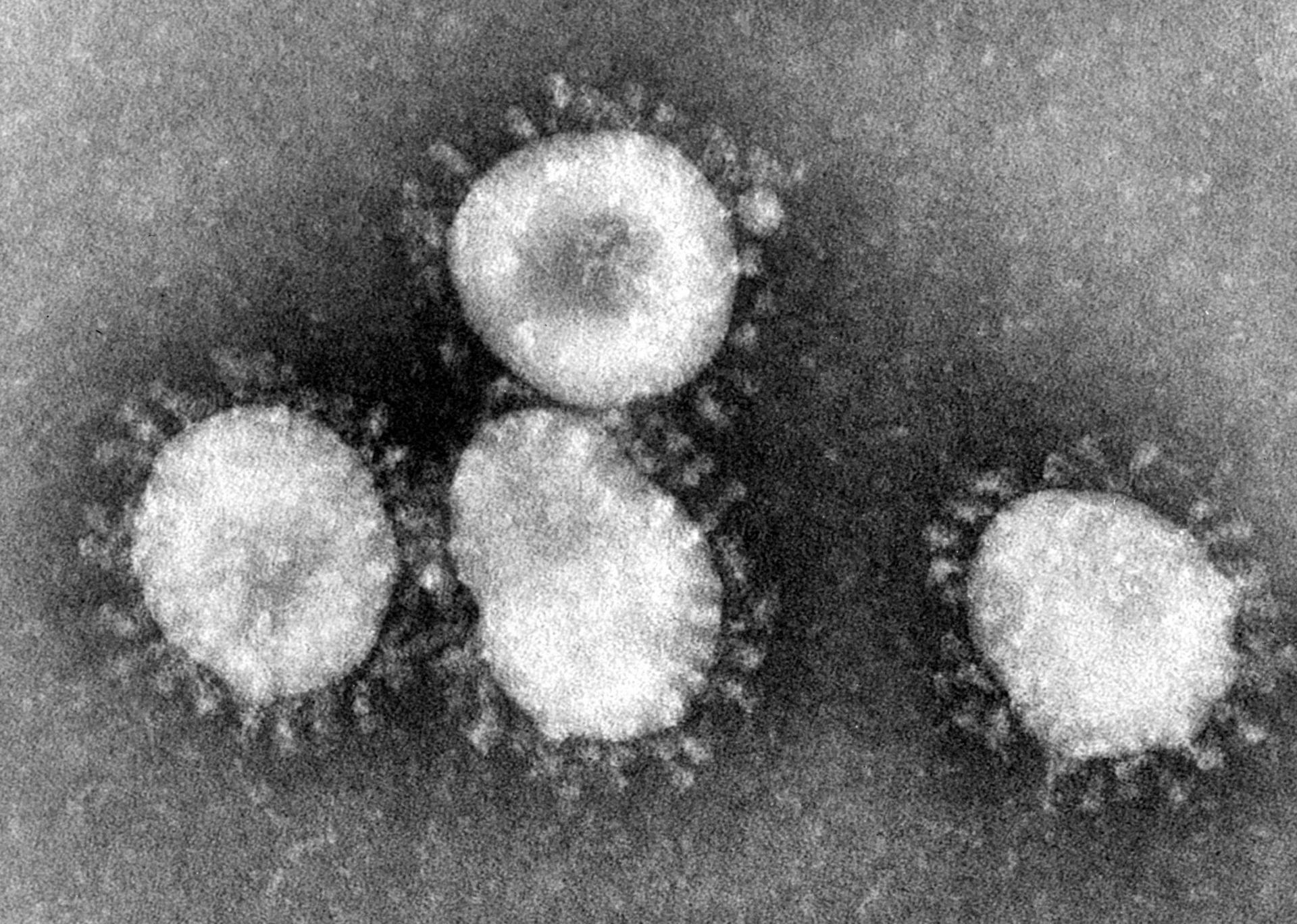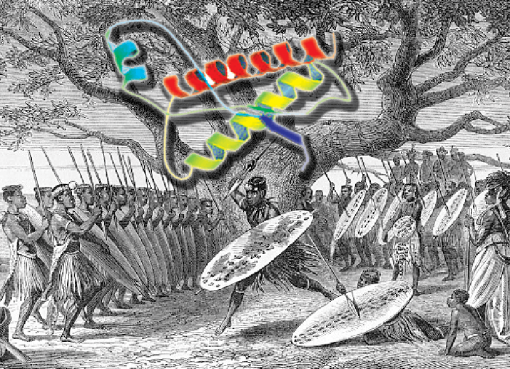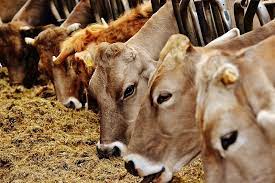Dr. Ankita Gogoi1 and Dr. Prasanta Chabukdhara2
Ph.D. Scholars (In-service)
1Department of Animal Genetics and Breeding, 2Department of Veterinary Biochemistry
College of Veterinary Science, Assam Agricultural University, Khanapara, Guwahati
Email id: drankita.vet009@gmail.com
[This article is being published for the purpose of information only and reflects the current outbreaks and the details available so far.]
Introduction
With the beginning of Chinese New Year – year of metal rat, news emerged of an outbreak of respiratory illness of unknown aetiology in Wuhan, China, which is known as a strong virology hub. It is well-equipped to detect and deal with such outbreaks; however, it has put China’s epidemic preparedness to the test that still actively remembers the severe acute respiratory syndrome (SARS) Coronavirus outbreak in 2003. In this backdrop, new cases clustered around the Huanan Seafood Wholesale Market from 8th December, 2019. The market was eventually closed on 1st January 2020 but the Chinese authorities reported having isolated a new type of Coronavirus, 2019-nCoV. Although initially very limited human to human spread was reported, the recent increase in cases, including 15 healthcare workers, reports of super-spreaders and the spread of the virus to other Chinese cities and various Asian countries have evidenced that there is indeed a human-to-human transmission. The virus had spread from China to 22 other countries, infecting nearly 12,000 people and killing almost 249 so far. The World Health Organization (WHO) Emergency Committee has declared the outbreak as a public health emergency of international concern.
The Coronavirus
The name “Coronavirus,” is derived from the “corona”-like or crown-like morphology observed for these viruses in the electron microscope (Tyrrel et al., 1968). In 1975, the Coronaviridae family was established by the International Committee on Taxonomy of Viruses. These are enveloped viruses with round and sometimes pleomorphic virions of approximately 80 to 120 nm in diameter. They contain positive-strand RNA genome of approximately 30 kb (Lee et al., 1991). The RNA genome is complexed with the basic nucleocapsid (N) protein to form a helical capsid found within the viral membrane. The membranes of all coronaviruses contain at least three viral proteins. These are spike (S), the type I glycoprotein that forms the peplomers on the virion surface, giving the virus its corona- or crown-like morphology under the electron microscope; the membrane (M) protein is a protein that spans the membrane three times and has a short N-terminal ectodomain and a cytoplasmic tail, and small membrane protein (E), which a highly hydrophobic protein (Bond et al., 1979).
Coronaviruses are a fascinating group of viruses providing animal models of pathogenesis, unusual molecular mechanisms of transcription and recombination, and some new emerging pathogens. The emergence of SARS and the identification of a Coronavirus as the etiologic agent of the disease was a surprise to the Coronavirus community, as it was the first definitive association of a Coronavirus with a severe disease in humans. The emergence of the 2019-nCov has spurred on the awareness to consider coronaviruses as the cause of human respiratory and perhaps other types of diseases. Future directions for research include further understanding of its mechanisms of replication, elucidation of the molecular determinants of virulence, tropism and the immune response with attention to the possible roles of group-specific proteins, development of vaccine strategies and antiviral therapies for animal and human viruses, and very likely the isolation and characterization of new pathogenic human coronaviruses.
Timeline of events from emergence to global emergency
| 8 December, 2019 | The first patient was recorded by Chinese authorities; seven cases were documented, two of them were linked with the Hunan Seafood Wholesale Market of Wuhan. |
| 30 December, 2019 | “Urgent notice on the treatment of pneumonia of unknown cause” was issued by the Medical Administration of Wuhan Municipal Health Committee. |
| 31 December, 2019 | 27 people with pneumonia of unknown origin were reported to WHO.
Most were stallholders from the Hunan Seafood Wholesale Market. |
| 1 January, 2020 | The US Centers for Disease Control and Prevention identified the seafood market as the suspected hub of the outbreak and the market remained closed since then. |
| 7 January | The virus identified as Coronavirus 2019n-CoV. |
| 9 January
|
The first genome sequence of 2019-nCoV was reported in the open access repository virological.org on behalf of a consortium led by Professor Yong-Zhen Zhang of Fudan University, Shanghai. |
| 11 January | First death related to Coronavirus infection reported. |
| 21 January | Chinese health workers infected. |
| 22 January | Airports across the world stepped up screening of passengers coming from Wuhan. |
| 23 January
|
Chinese government closes off Wuhan.
In a controversial study published, “Homologous recombination within the spike glycoprotein of the newly identified Coronavirus 2019-nCoV may boost cross-species transmission from snake to human” Wei Ji et al. (2020) claimed that snakes had spread the virus. However, scientists dismissed the hypothesis. |
| 24 January
|
Dr. Rolf Hilgenfeld, University of Lübeck, Germany, trying to get into Wuhan to test two compounds in animals was infected with the new related Coronavirus. |
| 27 January | Death toll rises. |
| 29 January | Australian researchers grow virus in cell culture. |
| 30 January | Human-to-human transmission confirmed in the United States.
India confirms its first case of Coronavirus in a student who had returned from Wuhan University to the Indian state of Kerala. |
| 31 January |
Death toll hits 213 and the number of infected cases increased to 9776 (Map of 2019-nCoV Global Cases by Johns Hopkins) WHO declares Global Emergency. |
Source: Nature Briefing
Huanan Seafood Wholesale Market of Wuhan – from where it all started!
It didn’t take long for the authorities to identify the suspected source of the deadly Coronavirus outbreak in Chinese city of Wuhan: the Hunan food market where vendors sell carcasses and live specimens of dozens of wild animals. A messy complex of 1,000 stalls is the largest of its kind in central China, mostly supplying seafood to Wuhan’s residents and restaurants. It has continued to allow trade despite warnings that it caused a deadly Coronavirus outbreak almost two decades ago and could trigger another global epidemic. Many international newspapers had reported that “unsanitary” conditions and procedures are followed in the city for processing and selling of meat products. The market was closed on 1st January 2020 after the reports of the outbreak; however, it’s high time that authorities take concrete steps for regulating such markets.
Measures to control Coronavirus
Following guidelines may help in preventing the spread of the virus:
Contact tracing: People who have been around someone with a confirmed infection should be identified and monitored. If they develop any symptom, they should be isolated and treated until laboratory testing can be done to determine if they have 2019-nCoV.
Screening with clinical case definition: Because there are likely many unreported cases, there should be clinical case definition, a checklist of symptoms and risk factors suggestive of infection to screen people.
Home-based isolation: A system could immediately be established to take test samples from patients with the symptoms suggestive of infection who are not severely ill and then send them home with protective respirator masks, instructions on hand-washing to prevent the further spread of the disease, and orders to remain at home until the test results come back. This approach could preserve precious hospital capacity for those who need it most.
Rapid diagnostics: Another measure that could prove essential is the development of rapid, “point-of-care” diagnostic tests that do not require specialized equipment or technicians and can provide results within minutes.
The 2019-nCoV epidemic is evolving by the hour. We need to move swiftly to respond to this threat. As highlighted by the Executive Director of WHO Health Emergencies Programme, we are entering a new phase of high-impact epidemics where constant outbreaks are the new normal, and one should not expect their frequency to decrease. This increase – which is linked to rapid urbanization, population growth, global travel, deforestation, climate change and political instability – emphasizes the need to improve outbreak responses and open sharing of information as early as possible is a vital part of this effort. However, a response based on equipping local communities with surveillance and control capacity at the source, rapid and open communication of epidemiological and genetic information, and international community support will increase our chances of controlling outbreaks earlier and thus potentially save lives.
To assist health workers and researchers working under challenging conditions to bring this outbreak to a close, The Lancet has created a Coronavirus Resource Centre. This resource brings together contents related to the new 2019 novel Coronavirus.

References:
Bond, C.W.; Leibowitz, J.L. and Robb, J.A. (1979). Pathogenic murine coronaviruses. II. Characterization of virus-specific proteins of murine coronaviruses JHMV and A59V. Virology. 94: 371–384.
Lee, H.J.; Shieh, C.K.; Gorbalenya, A.E.; Koonin, E.V.; La Monica, N.; Tuler, J.; Bagdzhadzhyan, A. and Lai, M.M. (1991). The complete sequence (22 kilobases) of murine coronavirus gene 1 encoding the putative proteases and RNA polymerase. Virology. 180: 567–582.
Gralinski, L.E. and Menachery, V.D. (2020). Return of the Coronavirus: 2019-nCoV. Viruses. 12: 135
Nature Microbiology | www.nature.com/naturemicrobiology
Dhillon, R.S. and Srikrishna, D. (2020). What will it take to stop Coronavirus? Harvard Business Review. https://hbr.org/2020/01/what-will-it-take-to-stop-coronavirus (Accessed on 05.02.2020)
Weiss, S.R. and Martin, S.N. (2005). Coronavirus Pathogenesis and the Emerging Pathogen Severe Acute Respiratory Syndrome Coronavirus. Microbiology and Molecular Biology Reviews. 69: 635–664.
Tyrrel, D.A.J.; Almedia, J.D.; Berry, D.M.; Cunningham, C.H.; Hamre, D.; Hofstad, M.S.; Malluci, L. and McIntosh, K. (1968). Coronavirus. Nature. 220: 650.




